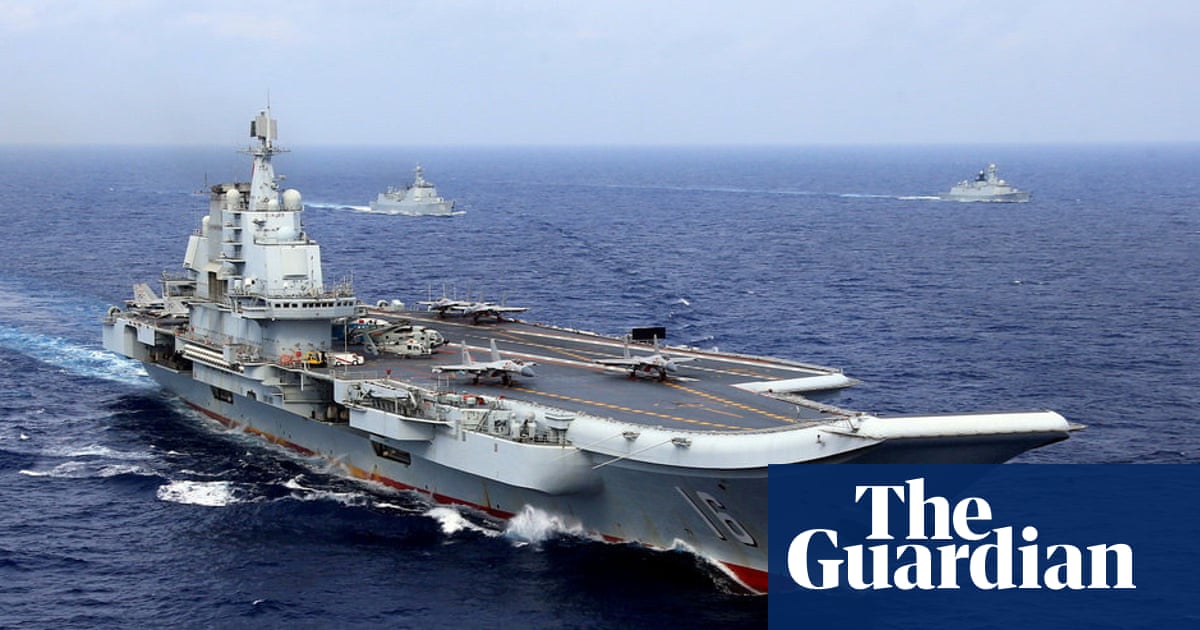A Chinese aircraft carrier group has entered an area of Japan’s territorial waters for the first time, prompting concern in Tokyo overChina’s expanding naval reach.
The Liaoning carrier, accompanied by two missile destroyers and a supply ship, entered Japan’s exclusive economic zone (EEZ) on Saturday evening,Japan’s defence ministry said, before exiting to conduct military drills.
The chief cabinet secretary, Yoshimasa Hayashi, did not say if the government had lodged a formal protest, saying only that it had “conveyed an appropriate message to the Chinese side”.
“We will do our utmost to perform our warning and surveillance duties at sea and in the air,” he added, according to the Kyodo news agency.
The incursion into Pacific waters about 300km south-west of Minamitori island will add to concern in Tokyo and Washington about China’sincreasingly assertive naval and air activityin and around Japanese waters.
The countries are embroiled in alongstanding territorial disputeover theSenkakus– uninhabited islets in the east China Sea that are administered by Japan but claimed by China, where they are known as the Diaoyu.
This is the first time, however, that a Chinese vessel has entered that part of Japan’s EEZ – an area within 200 nautical miles (370km) of its coastline – a defence ministry spokesperson told Agence France-Presse.
“We think the Chinese military is trying to improve its operational capability and ability to conduct operations in distant areas,” the spokesperson said.
After leaving the EEZ, the Chinese carrier group conducted landing and take-off drills involving fighter jets and helicopters, the ministry said, adding that Japan had deployed a warship, Haguro, to monitor the situation.
Minamitori, the easternmost point of the Japanese archipelago, is surrounded by large deposits of rare metals. Last year, experts from the Nippon Foundation and Tokyo University said about 200m tonnes of manganese nodules rich in rare metals existed on the seabed near the island.
No civilians live on Minamitori, located about 1,900km south-east of Tokyo, but it hosts a small number of personnel from the meteorological agency, the self-defence forces and the coast guard.
Saturday’s incident was the latest in a series of incursions by Chinese vessels into Japanese waters. Last month, the Liaoning sailed between two southern islands inside a different region of Japan’s EEZ. In September last year the same carrier group sailed betweenYonaguniand Iriomote – two Japanese islands nearTaiwan– and entered Japan’s contiguous waters, an area up to 24 nautical miles from its coast.
Japan’s government condemned the move at the time as “unacceptable” and voiced “serious concerns” to Beijing.
